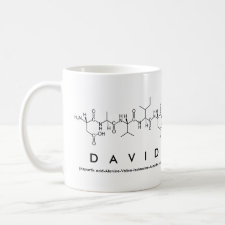
Authors: Spivak DA
Article Title: Optimization, evaluation, and characterization of molecularly imprinted polymers.
Publication date: 2005
Journal: Advanced Drug Delivery Reviews
Volume: 57
Issue: (12)
Page numbers: 1779-1794.
DOI: 10.1016/j.addr.2005.07.012
Alternative URL: http://144.206.159.178/FT/18/595515/12295997.pdf
Abstract: The underlying mechanisms for molecular recognition exhibited by the imprinting effect can be attributed to two processes. The pre-organization of complementary functional groups in the polymer by the template and the formation of a shape-selective cavity that is complementary to the template. However, measurements of binding and selectivity combine all effects contributing to molecular recognition in MIPs into one figure of merit. If the two molecules being compared are not enantiomers, then there are other factors which contribute to differential binding such as size or different partitioning effects due to differences in polarity, hydrophobicity, ionization state or shape and/or conformational effects. The best probe for the imprinting effect is therefore an enantiomeric pair. Therefore, the first section of this article discusses enantioselective optimization of polymerization, the second section will review methods employed for evaluation of MIPs and the last section will cover materials science methods used to characterize the physical properties of MIP materials
Template and target information: Review - MIPs optimisation and characterisation
Author keywords: molecularly imprinted polymer, optimization, Evaluation, characterization, Pre-polymerization complex, functional monomer, Crosslinking monomer



Join the Society for Molecular Imprinting

New items RSS feed
Sign-up for e-mail updates:
Choose between receiving an occasional newsletter or more frequent e-mail alerts.
Click here to go to the sign-up page.
Is your name elemental or peptidic? Enter your name and find out by clicking either of the buttons below!
Other products you may like:
 MIPdatabase
MIPdatabase









